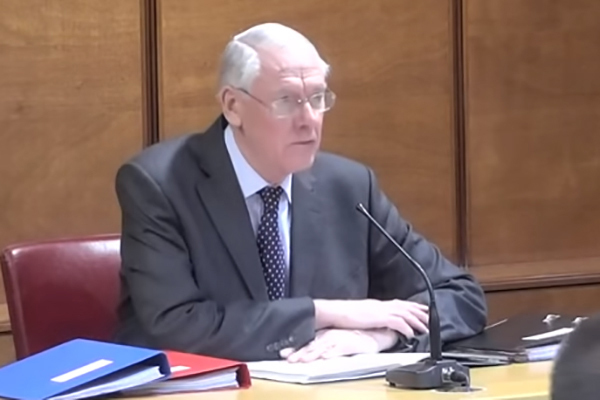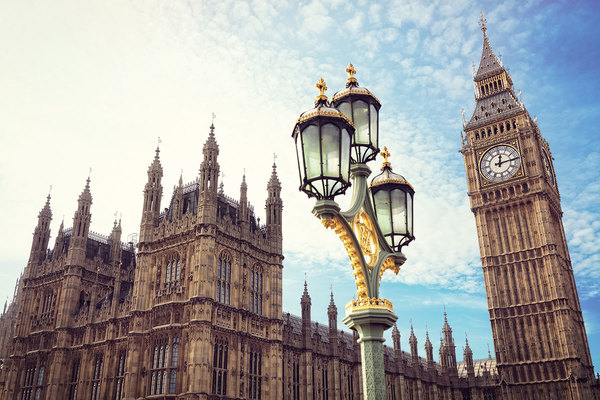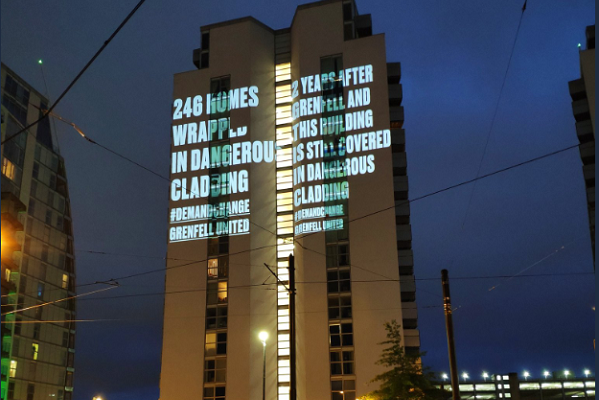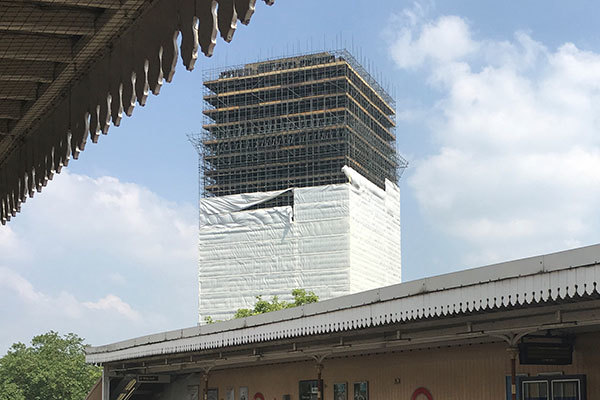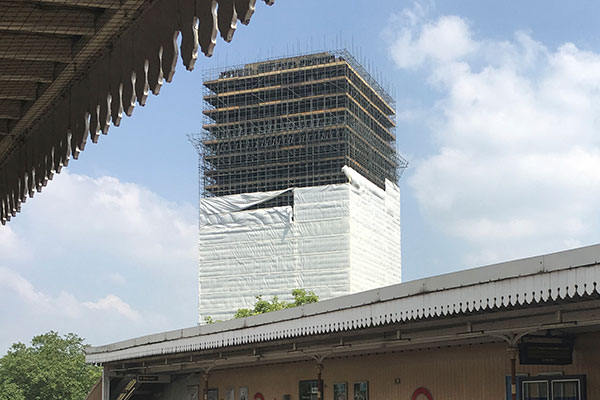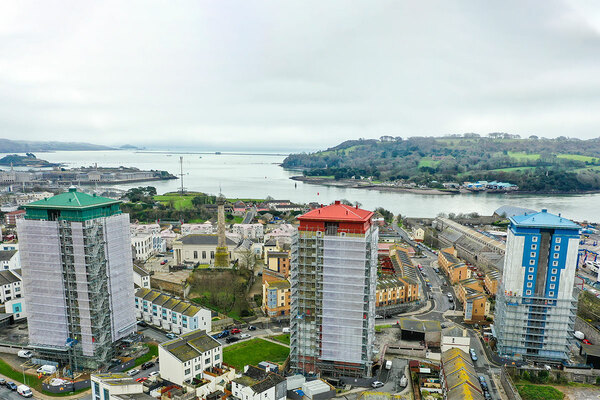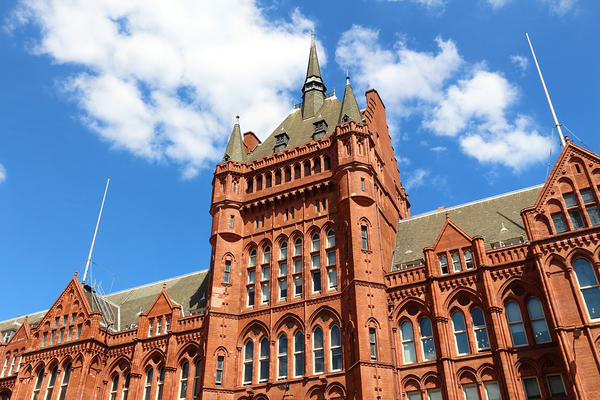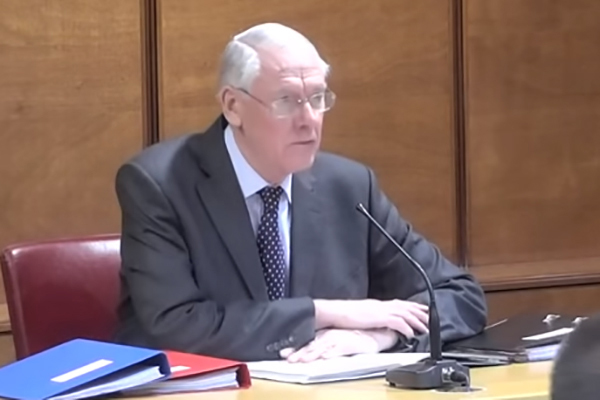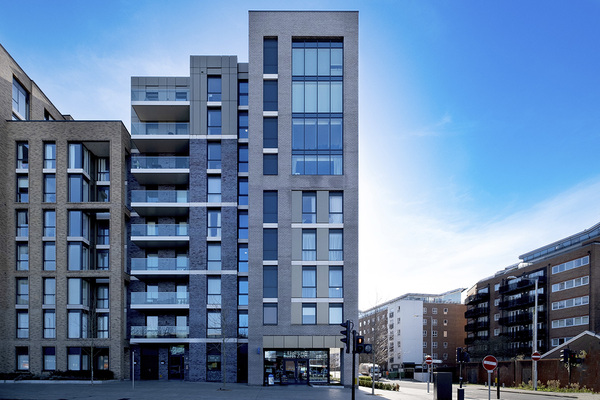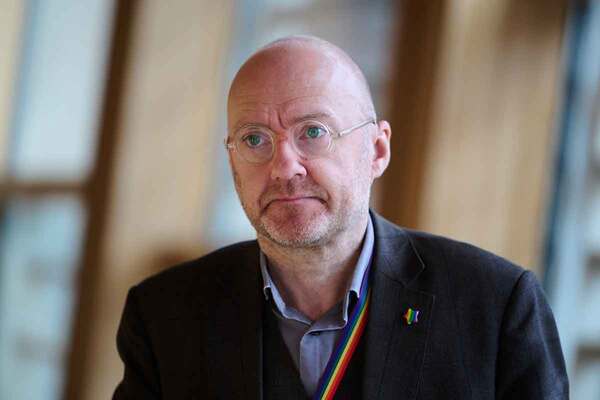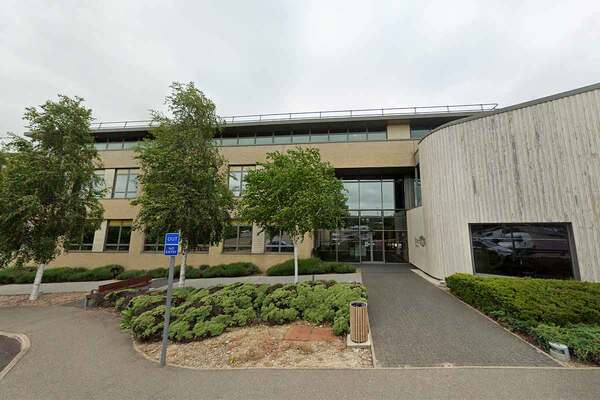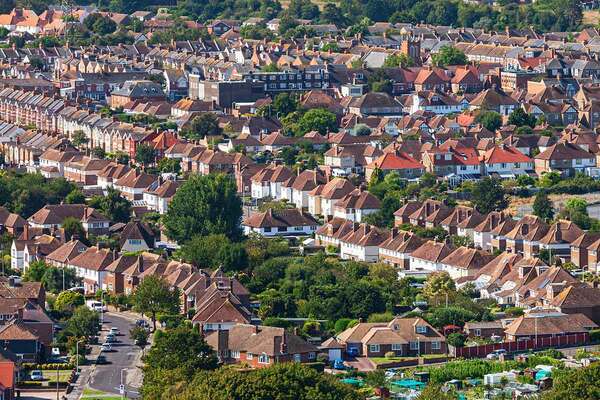Grenfell Inquiry: ACM cladding was ‘primary cause of fire spread’ and tower did not comply with regulations, judge rules
The judge leading the Grenfell Tower Inquiry has ruled that the cladding installed on the tower did not comply with building regulations, finding that the polyethylene-cored panels were the “primary cause” of the rapid spread of flames.
Sir Martin Moore-Bick published his long-awaited report today, setting out a number of ways in which building failures contributed to the spread of the fire that killed 72 people in June 2017.
The 865-page report, which was also deeply critical of the London Fire Brigade, found:
- Changes to the walls of the tower made during the refurbishment meant it was in breach of Regulation B(4), which requires the external walls of a building to “adequately resist the spread of flame”
- The aluminium composite material (ACM) cladding panels was the “primary cause” of fire spread up the tower, adding that it was “more likely than not” that the plastic insulation also contributed
- An ‘architectural crown’, also made of ACM, at the top of the tower was the cause of the most rapid horizontal fire spread
- Flaws in the design of the kitchen window in Flat 16 allowed an “ordinary” and “perfectly foreseeable” kitchen fire to escape the room and ignite the cladding
- The building suffered a “total failure of compartmentation”, with missing self-closers on fire doors a crucial contributing factor
Survivors of the fire had called on Sir Martin to make a clear statement that the building did not comply with regulations – hoping it would mark the first step on a journey towards accountability for the errors.
British building regulations are expressed in high-level ‘performance-based’ standards, with more detailed and non-compulsory guidance contained in ‘approved documents’ published by the government.
Sir Martin opted to make an early finding that the building breached the headline regulation, although he has not yet made any statements on its compliance with the approved documents.
He said: “Although it was not originally my intention to reach conclusions… about the tower’s compliance with building regulations, I can see no good reason why that question should not be determined now so far as it relates to the external façade.
“There is compelling evidence that Requirement B4(1) was not met in this case. It would be an affront to common sense to hold otherwise.”
The polyethylene inside the ACM panels was cited as the “primary cause” of the spread of fire up the cladding, with Sir Martin citing evidence that the plastic has “a heat of combustion similar to that of petrol or diesel fuel”.
He rejected submissions from cladding manufacturer Arconic, insulation manufacturer Celotex, and contractor Rydon that there was insufficient evidence to draw conclusions about the causes of the fire spread.
“I am satisfied that, although many different factors played a part, the principal reason why the flames spread so rapidly up the building was the presence of the ACM panels with polyethylene cores, which… melted and acted as a source of fuel for the growing fire,” Sir Martin said.
He added that it was “more likely than not” that Celotex’s polyisocyanurate insulation boards and Kingspan’s phenolic panels “contributed to the rate and extent of vertical fire spread”, although he said it was not yet possible to quantify exact contributions.
He also noted evidence that the spread of flame upwards at Grenfell Tower was actually one of the slowest compared with other ACM cladding fires that have happened overseas in recent years – with flames spreading at Grenfell at a rate of four metres a minute, compared with a fire in Dubai when the rate was 22 metres.
Crucially, though, almost all of these fires burned out when they reached the roof, rather than spreading horizontally and downwards to engulf the whole building as at Grenfell Tower.
“The rapid horizontal and downwards spread of flame was a unique feature of this particular fire, which sets it apart from other international fires and is an important factor in making the outcome so devastating in terms of the loss of human life,” he said.
He said there was “compelling evidence, which I accept”, that the most rapid horizontal fire spread was due to an ‘architectural crown’ – an aesthetic flourish at the top of the building that was also made of ACM.
Sir Martin concluded the horizontal spread was also caused by polyethylene melting and dripping down the building, and the “principal route” of the downward spread was over the columns.
He said it was “unlikely” that defects in the installation of cavity barriers were significant and said there are “fundamental problems” with using cavity barriers which expand during a fire in a cladding system of this type.
While he did not address issues concerning alleged weaknesses in the government guidance and industry practice with relation to the use of cladding, he signalled this would form a significant part of phase two of the inquiry, which commences in January.
He said the inquiry would examine “what was and should have been known both by those in the construction industry and by those in central government responsible for setting fire safety standards”.
There was also serious criticism of the design of the windows for allowing the fire to break out of the kitchen where it started.
One of the fire damaged windows from inside Grenfell Tower (picture: Grenfell Tower Inquiry)
He concluded that the “configuration and materials of the windows and the exterior cladding” gave a “disproportionately high” chance of the fire spreading into the windows.
In fact, he quoted one expert saying it was “almost certain if not inevitable” that a fire of this magnitude would occur in a kitchen at some point, adding that it was “perfectly foreseeable”.
The judge concluded that the most likely means of spread out of the window was due to the new jambs which had been fixed with adhesive to the original pre-refurbishment timber frames.
He said this would have led to the jamb near the fridge freezer deforming as smoke from the fire impinged, carrying with it an insulation board which it was attached to with the adhesive.
This would have allowed the fire to gain access to the cavity between the ACM and the insulation on the wall outside.
However, he also acknowledged a simulation fire carried out for the Metropolitan Police which concluded that the most likely route was via the extractor fan and the infill panel in which it was mounted.
“What really matters is that the design of the refurbishment, the choice of the materials and the manner of construction allowed an ordinary kitchen fire to escape into the cladding with disastrous consequences,” he said.
In terms of the fire breaking back in through windows to other flats, he accepted the “sad fact” that once the fire was burning on the outside it would have broken back in “by one means or another”, such as by smashing the glass in the frame.
However, he added that it was “striking” that so many residents had seen flames enter via extractor fans.
Regarding fire doors, he noted that it was significant that doors on up to seven floors where the fire first penetrated appeared to have missing self-closers, meaning smoke entered the lobbies of the building rapidly when residents fled.
Other doors which were shut allowed smoke to penetrate, he said. He also noted that firefighting operations occasionally involved propping doors open, which allowed smoke to flow into previously unaffected areas, such as the stairwell.
Overall he said: “The building suffered a total failure of compartmentation. How the building came to be in that state is the most pressing question to be answered in Phase Two.”
The Grenfell Tower Inquiry recommendations: phase one
Picture: Getty
Evacuation
There were no plans to evacuate Grenfell Tower available. Sir Martin Moore-Bick, chair of the Grenfell Inquiry, recommended:
- The development of national guidelines for carrying out partial or total evacuations of high-rise buildings – including protecting fire access routes and procedures for evacuating people who require assistance
- Fire services develop policies for partial or total evacuation of high rises
- Owner and manager be required to draw up and keep under review evacuation plans, with copies provided to local fire and rescue services and placed in an information box on the premises
- All high-rise buildings be equipped with facilities to enable the sending of an evacuation signal to the whole or a selected part of the building
- Owners and managers be required by law to prepare personal evacuation plans for residents who may struggle to do so personally, with information about them stored in the premise’s information box
- All fire services be equipped with smoke hoods to help evacuate residents down smoke-filled stairs
Fire doors
Sir Martin said it is apparent that “ineffective fire doors allowed smoke and toxic gases to spread through the building more quickly than should have been possible”, and that missing self-closers played an important role. He recommended:
- An urgent inspection of fire doors in all buildings containing separate dwellings, whether or not they are high rises
- A legal requirement on the owner or manager of these buildings to check doors at least every three months to ensure self-closing devices are working effectively
Sprinklers
Noting the recommendation from the coroner investigating the Lakanal House fire that the use of sprinklers be encouraged, Sir Martin said that some of his experts had “urged me to go a step further and to recommend such systems be installed in all existing high-rise buildings”.
He said that sprinklers have “a very effective part to play” in an overall scheme of fire safety, but that he had not yet heard evidence about their use. He said that he could make no recommendations at this stage, but that he would consider the matter in phase two.
Internal signage
Floor numbers in the tower were not clearly marked and markings were not updated when the floor numbers changed following the refurbishment. Sir Martin said that all high-rise buildings should have floors clearly marked in a prominent place, which would be visible in low light or smoky conditions. Given that not all residents of Grenfell could read fire information signs, he said this should now be provided in a means that all residents can understand.
Use of combustible materials
Sir Martin said the original fire in the kitchen was no more than an ordinary kitchen fire that spread to the cladding because of “the proximity of combustible materials to the kitchen windows” – such as the uPVC frames.
He said this is a matter that “it would be sensible” for owners of other high-rise buildings to check.
He said he would “add his voice” to those who have expressed concern about the slow pace of removal work for more than 400 other tall buildings in England with aluminium composite material cladding.
A total of 97 buildings in the social housing sector and 168 in the private sector have not yet seen the work complete. Sir Martin said the work must be completed “as vigorously as possible”.
He said particular attention should be paid to decorative features, given the crucial role played by the architectural crown at Grenfell in spreading the fire around the building.
Given the decision to ban combustible materials on new buildings last year, he did not call for further restrictions on their use.
Fire service: knowledge and understanding of materials in high-rise buildings
Sir Martin raised concern that junior firefighters were not aware of the danger of cladding fires, and that the London Fire Brigade (LFB) was unaware of the combustible materials used to refurbish Grenfell Tower.
He therefore recommended:
- That the owner and manager of every high-rise building is required to provide details of external walls and the materials used to the local fire service, and inform them of any changes
- To ensure that fire services personnel at all levels understand the risk of cladding fires
Plans
Sir Martin said that a lack of plans did not “unduly hamper” fire services at Grenfell, as each floor was laid out in the same way. However he warned that another building with a more complex layout could pose problems. He recommended:
- That owners and managers of high-rise buildings are required by law to provide paper and electronic versions of building plans of all high rises to local fire services
- To ensure the building contains a premises information box, including a copy of floor plans
Lifts
Firefighters were unable to use a mechanism that allows them to take control of the lifts on the night of the fire, hampering their progress and meaning residents could still use the lifts, “in some cases with fatal consequences”. Sir Martin therefore recommended:
- That the owner and manager of every high-rise building be required by law to carry out regular inspections of any lift required for use by firefighters and the mechanism that allows them to take control of it
Section 7(2)(d) of the Fire and Rescue Services Act
The judge was concerned that inspections of the tower by the fire service before the fire were not enough to meet their responsibilities under this act. He recommended:
- A revision of the guidance for the London Fire Brigade, and training for all officers above the rank of crew manager in inspecting high-rise buildings
Co-operation between emergency services
There was a lack of communication between each emergency service at Grenfell, with each declaring a major incident at different times without telling each other. Sir Martin recommended several changes to ensure better communication in the future.
Personal fire protection
Sir Martin decided not to issue a recommendation that individual flats be provided with fire extinguishers or fire blankets, noting concerns that this could encourage residents to fight fires rather than escape and call the emergency services.
Communication between the control room and the incident commander
While guidance calls for a “free flow” of information between a fire service control room and the commanding officer on the ground, that often does not happen. Sir Martin therefore recommended:
- A review of policies by the LFB on this matter, including training for all officers who could serve as incident commanders and senior control room officers.
- A dedicated communications link between the senior officer and the incident commander
Emergency calls
Even allowing for the pressure of the night, Sir Martin said that fire survival guidance calls were not handled in an “appropriate or effective way”. He therefore recommended:
- Amending of policies and training for control room officers
- That all fire services develop policies for multiple fire survival guidance calls
- Electronic systems to record and display calls
- A policy for managing a transition from ‘stay put’ to ‘get out’ and training for call handlers in delivering this change of advice
Command and control
Sir Martin said firefighters too frequently “acted on their own initiative”, resulting in a duplication of effort. He called for better policies to ensure:
- Better control of training and deployment
- Information is obtained from crews after they have deployed
Equipment
Sir Martin made some recommendations for improvements to fire service equipment, including radios and the command support system.
Testing and certification of materials
Sir Martin said this is an issue that will be investigated “early in phase two”, along with an assessment of “whether the current guidance on how to comply with the building regulations is sufficiently clear and reliable”.
He also said the inquiry would investigate whether a ‘prescriptive’ regime of regulation was necessary. However, as these issues have not yet been examined by the inquiry he did not make any recommendations.
Grenfell Tower Inquiry: full coverage
Evacuation plans should be developed for all high-rise buildings, says Grenfell Inquiry judge
Sir Martin calls for landlords to develop evacuation policies on all high-rise buildings as well as recommending an “urgent” inspection of fire doors in all properties.
Click here to read the full story
Grenfell Tower Inquiry: the recommendations
A full list of Sir Martin’s 17 recommendations, including calls for building owners to install facilities to give evacuation signals to tenants and cladding removal work to be completed “as vigorously as possible”.
Click here to read the full story
Grenfell Inquiry: ACM cladding was ‘primary cause of fire spread’ and tower did not comply with regulations, judge rules
The judge leading the Grenfell Tower Inquiry has ruled that the cladding installed on the tower did not comply with building regulations, finding that the polyethylene-cored panels were the “primary cause” of the rapid spread of flames.
Click here to read the full story
Grenfell Inquiry: round-up of Sir Martin Moore-Bick’s phase one conclusions
How the fire started, why the fire spread, what was the response from the fire brigade, emergency services and Kensington and Chelsea Tenant Management Organisation, all covered in our round-up of the Sir Martin’s conclusions.
Click here to read the full story
Grenfell Inquiry report: stay put ‘an article of faith’ within LFB
The inquiry judge criticises the London Fire Brigade’s “reluctance to believe that a building wouldn’t comply with building regulations” and claims that many lives would have been saved if the incident commander told residents to evacuate earlier.
Click here to read the full story
KCTMO chief criticised for ‘passive role’ and ‘ineffective leadership’ on night of Grenfell fire
Former chief executive of the Kensington and Chelsea Tenant Management Organisation was labelled as “essentially detached” from events on the night of the fire by Sir Martin. The company was also criticised for not passing on crucial resident information to the fire brigade.
Click here to read the full story
Grenfell Inquiry: ACM cladding was ‘primary cause of fire spread’ and tower did not comply with regulations
Despite saying that he would try not to deal with the make-up of the building in his phase one report, Sir Martin decided to make an early finding that the building breached headline regulation. He also ruled that the building suffered “total failure of compartmentation”.
Click here to read the full story
Grenfell Inquiry reaction: survivors call for implementation timeline for recommendations
Survivors group Grenfell United calls for fire service bosses to “face consequences” for failings leading up to the fire, while the London Fire Brigade, National Housing Federation and Royal Borough of Kensington and Chelsea also respond
Click here to read the full story
Recommendation rejected by Pickles as ‘disproportionate’ in 2013 repeated in Grenfell Tower Inquiry
Story reveals that as communities secretary Eric Pickles was given a recommendation after the Lakanal House Fire to ensure all high-rises “provide relevant information on or near premises” but branded a move to implement “unnecessary and disproportionate”
Click here to read the full story
Grenfell judge calls for Johnson to implement Grenfell Inquiry recommendations ‘without delay’
Grenfell judge calls for Johnson to implement Grenfell Inquiry recommendations ‘without delay’ In a letter to prime minister Boris Johnson before the inquiry was published, report author, Sir Martin Moore-Bick, calls on PM to implement inquiry recommendations “without delay”.
Click here to read the full story
Government to implement Grenfell Inquiry recommendations ‘in full’ and provide funding
Robert Jenrick, housing secretary, promises to bring in all of Sir Martin’s recommendations “without delay” and also guarantees government will pay for changes.
Click here to read the full story
Government to implement Grenfell Inquiry recommendations in full
Ministers will implement recommendations put forward in the Grenfell Tower Inquiry’s first report “in full” and “without delay”, housing secretary Robert Jenrick has confirmed.
Click here to read the full story
Stay Put: where did it come from and where do we go next?
“Stay put had become an article of faith and to depart from it was unthinkable.” These are the words of Grenfell Inquiry judge Sir Martin Moore-Bick. Peter Apps looks at where the idea came from and where we go now.
Click here to read the full story
Is your approach to fire safety reliant on faith in the system or good judgement?
The Grenfell Tower Inquiry report suggests that housing providers and the fire service have not been willing enough to plan for worst-case scenario fires in high-rise buildings. Martin Hilditch outlines how the inquiry’s report should guide thinking and practice
